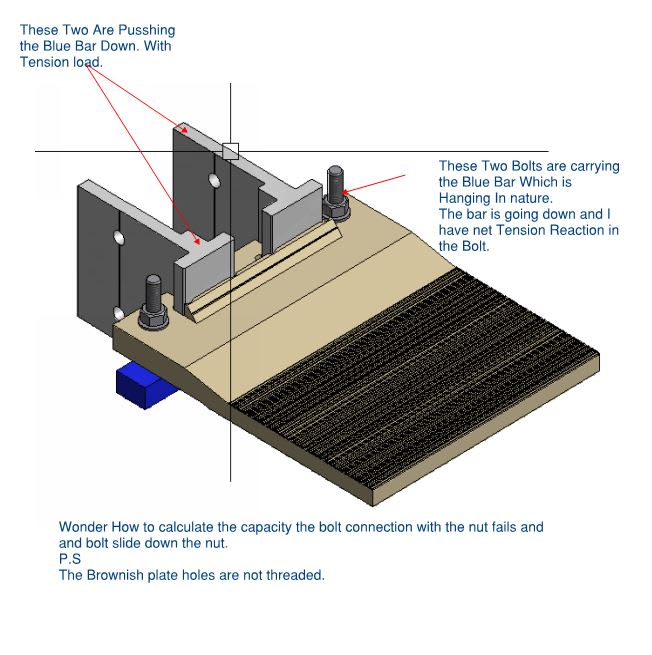Robert_spider
Structural
Hi To all,
I have a question to be asked I know how to calculate the bolt capacity for Tension and Shear, also how to check bolt bearing against different elelment such as Steel or Aluminum.
I want to ask if there is a hanging bolt by which a bar is hanging and the bolt subject to pure tension loads.
How can I calculate the force will make the bolt to fail the thread and come out of the nut.

I have a question to be asked I know how to calculate the bolt capacity for Tension and Shear, also how to check bolt bearing against different elelment such as Steel or Aluminum.
I want to ask if there is a hanging bolt by which a bar is hanging and the bolt subject to pure tension loads.
How can I calculate the force will make the bolt to fail the thread and come out of the nut.

